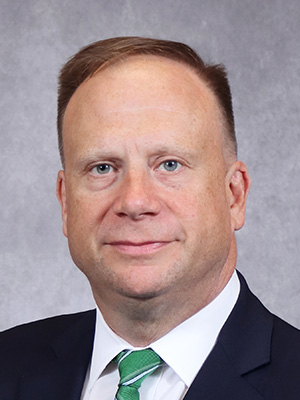I have been thinking lately about the ways in which we collaborate across this large and complex institution. It is certainly not easy, but we are getting better at using both old and new methods and resources to make positive changes at MSU.
 We talk a lot about silos at MSU. Not literal silos, the towering cylinders that hold grain or corn. Rather, we talk about figurative silos, meaning a process or an office that is isolated from other parts of the institution. And we turn the noun “silo” into a verb when we say things like “let’s make sure that we don’t silo that function.”
We talk a lot about silos at MSU. Not literal silos, the towering cylinders that hold grain or corn. Rather, we talk about figurative silos, meaning a process or an office that is isolated from other parts of the institution. And we turn the noun “silo” into a verb when we say things like “let’s make sure that we don’t silo that function.”
When we talk about silos at MSU, we all seem to instinctively know they are to be avoided. To be siloed is to have hard boundaries that lead to growing differences in cultures and norms. Silos create organizational inefficiency, misalignment, and duplicated work. In short, we all seem to understand that silos should be avoided and, whenever possible, torn down.
Growing up in North Dakota, I saw a lot of silos. Not the figurative kind we avoid at MSU, but literal silos. They dot the landscape, and along with water towers and the newly built windmills, they are about the only things in the state that stand more than a few stories tall. Silos are a critical piece of infrastructure in a complex farming system, serving as a transportation hub for hundreds of millions of bushels of corn and wheat and a storehouse of seeds for next year’s crops. Silos hold both the potential and the product of our food production systems. Silos are incredibly valuable things.
I have always been struck by the discord between the figurative and literal meanings of “silos.” Figurative silos are bad; literal silos are good.
The problem with figurative silos is not rooted in the fact that they are accumulations of power or potential. Figurative silos become problematic when they are disconnected from the rest of the system. This, I think, is how we square the apparent contradiction between figurative and literal meanings of the word “silo.” Imagine a grain silo standing tall in the middle of nowhere, with no roads or rail lines connecting it to the rest of the food production and distribution systems. Everything would eventually rot; all its potential would be lost.
Understood in this way, our aversion to silos at MSU stems from our desire for interconnectivity, communication, and institutional openness. We need grain shovels and augers, seed trucks and railways, seeders and combines to fill and connect our silos to all the parts of our institution. We need to appreciate the capacity of silos to house and protect our potential, and we need to make sure that all of them are well connected to all the other parts of the system.
Interim President Woodruff has spoken about the image of “the Sower,” on the Beaumont Tower, describing “the everyman sowing the seeds of our founders and knowledge.” The seeds we sow are stored in MSU’s silos – in the books, offices, labs, and classrooms – protected and preserved for us to spread. Keeping these storehouses well-connected to one another and to the rest of our system requires us to be well-connected to one another, open to innovation and communication, and willing to cooperate toward what Interim President Woodruff has described as “our tripartite mission of education, research, and outreach.”
At MSU, our undergraduate silos interconnect through a series of governance committees, councils, associations, and identify groups. It is an alphabet soup of groups that includes CUED, UGAAD, BTAA, UCUE, UAL, CSSG, MSUBA, CHILA, COREM, APIDA, MSUBFSAA, ASMSU, and the UIA (and probably some others I have overlooked!). These spaces are critical, and I know that participating in these meetings takes up a great deal of time and energy. Thank you to all the colleagues who lead these groups and to all of you who regularly attend them.
Feedback and suggestions, especially from the MSU community, welcome at largent@msu.edu.